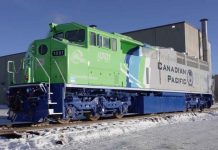Efficient freight operations are essential for businesses to meet customer demands, reduce costs, and increase profitability. In an increasingly competitive market, optimizing freight processes can provide a significant edge. Here are key ways to ensure that your freight operations run smoothly and efficiently.
- Leverage Technology and Automation
Incorporating technology into your freight operations can lead to significant time savings and reduced errors. A Transport Management System (TMS) is a critical tool in modern freight management, offering end-to-end visibility of shipments, automated route optimization, and real-time tracking capabilities. Using a TMS helps in coordinating shipments, predicting arrival times, and managing costs more effectively. Moreover, automating routine tasks such as order processing, dispatching, and inventory management reduces the workload on your team and minimizes the potential for human error.
Additionally, integrating Electronic Data Interchange (EDI) or Application Programming Interfaces (APIs) into your operations can streamline data exchanges with suppliers and clients, ensuring information accuracy and reducing the need for manual data entry. Automation tools also enhance communication, allowing instant updates on shipment status and any delays, which can be relayed directly to customers.
- Optimize Route Planning and Load Consolidation
Route optimization is one of the most impactful ways to enhance freight efficiency. By utilizing route planning software, you can find the quickest and most cost-effective paths, reducing fuel consumption and delivery times. Many route optimization tools can factor in real-time traffic, road closures, and weather conditions, helping your drivers avoid delays.
Load consolidation is another critical aspect of freight optimization. Consolidating smaller shipments into a single load can save both time and money, reducing the number of trips required and maximizing vehicle capacity. Effective load planning software can automate this process by analyzing shipment sizes, delivery windows, and vehicle capacities, determining the optimal way to combine shipments.
- Adopt Sustainable Practices
Sustainable practices not only improve efficiency but also reduce operational costs. Simple strategies like reducing empty miles by arranging backhaul shipments can make a significant difference. Fuel-efficient driving practices such as maintaining a steady speed, minimizing idling, and using aerodynamic equipment can also help save on fuel costs.
Fleet maintenance is another area where sustainability and efficiency go hand-in-hand. Regular vehicle maintenance helps prevent breakdowns, improves fuel efficiency, and extends the lifespan of your vehicles. Some companies are also exploring alternative fuels and electric vehicles as ways to reduce their carbon footprint and operating costs over time.
- Enhance Workforce Training and Safety
Well-trained staff are critical for efficient freight operations. Drivers and warehouse workers should be trained not only in job-specific skills but also in safety practices, efficient handling techniques, and customer service. Providing regular training on the latest technologies and industry best practices can also improve operational efficiency.
Safety should be a priority, as accidents and breakdowns can cause significant delays and increase costs. A robust safety program that includes regular vehicle inspections, safe driving protocols, and health monitoring ensures a safer working environment for employees while minimizing the risk of costly accidents.
- Monitor Key Performance Indicators (KPIs)
To continuously improve your freight operations, it’s essential to track and analyze key performance indicators (KPIs). Some useful KPIs to monitor include on-time delivery rate, fuel efficiency, cost per mile, and vehicle utilization rate. These metrics provide insights into areas that need improvement, allowing you to make data-driven decisions. By regularly reviewing KPIs, you can spot inefficiencies early and implement corrective measures to streamline your operations.






